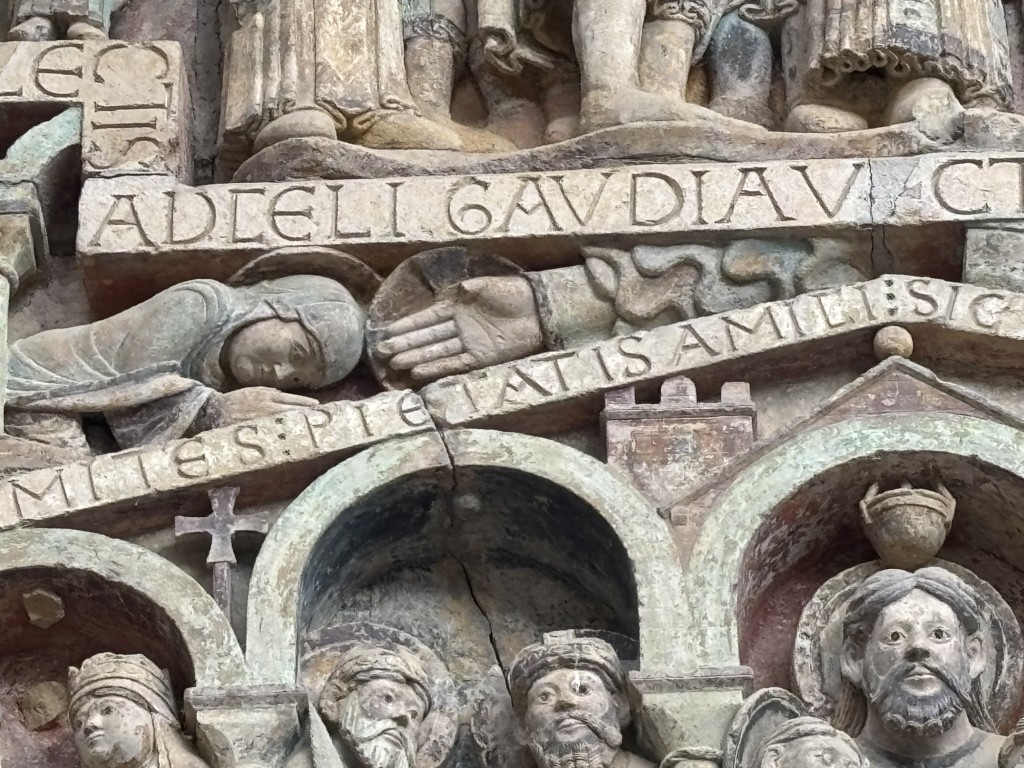Brief Description:
In March 2025, Jane Weissman traveled to Conques, France to visit the Romanesque Abbey Church of Sainte Foy and to examine its extraordinary Last Judgement above the western portal. She found its politics — historical, religious and artistic — to be as fascinating and complicated as such politics are today.
Join us at the Montauk Library on Wednesday August 20 at 6 pm and be amazed and amused to learn about Jane’s four-day adventure studying the church, walking two sections of the chemin and, by fortunate chance, taking her dinners with monks and pilgrims in the abbey.
Brief Bio:
Jane Weissman is the director of the community mural collective, Artmakers Inc. and co-author of the cultural history On the Wall: Four Decades of Community Murals in New York City. She curated exhibitions Images of the African Diaspora in New York City Community Murals and La Lucha Continua The Struggle Continues: 1985 & 2017. She is a frequent lecturer throughout the USA and abroad.
More information: (revised)
In 790 AD, the itinerant hermit monk Dadon arrived in Conques, a tiny village surrounded by mountains shaped like a “conque” (from the Latin concha, a shell). There he found a derelict oratory (a small chapel dedicated to private worship), originally built in 730 by Christians allegedly fleeing Spain from invading Saracens. He transformed the oratory into a thriving Benedictine abbey, attracting many monks. Embroiled in internal politics, Church authorities proposed moving the abbey to nearby Figeac, a major stop along the “chemin” or pilgrimage road leading to the Cathedral Basilica of Santiago de Compostela, the burial spot of St. James, one of Jesus’ twelve apostles.
Relics — fragments from Jesus’ passion (e.g, the “true” cross of the crucifixion) or body parts of early Christian saints — were big business in the early medieval period (from the fifth to tenth century). Pilgrims sought them out, praying to them for miracles or to gain entry into heaven. The Conque monks realized that relics could attract pilgrims, thus saving their abbey. Alas, no relics were locally available. However, the bones of the 12-year-old Sainte Foy, martyred in 303 AD, lay in Agen, an arduous 92 miles away as the crow flies. It took 10 years — and therein lies a tale — but, in 866 AD, her bones arrived in Conques, the result of prieu larcene or sacred theft. Pilgrims traveled long distances to revere an “authenticated” piece of Sainte Foy’s skull, often leaving offerings in thanks. The “translation” of St. Foy’s relics shifted the pilgrimage route to Conques and resulted in a booming economy was well as the abbey’s independent existence.
However, it was the spectacular Last Judgement — one of the many remarkable sculptures created for Romanesque church exteriors — that drew Jane to Conques. The church we see today was completed at the end of the 11th century and work on The Last Judgement began early in the 12th century.
Set in the western facade’s semicircular tympanum, it measures 22 feet wide by 12 feet high and includes 124 figures, originally painted in bright colors. The central image is an imposing Christ enthroned in majesty. Nearby, the Archangel Michael resurrects the dead, weighing their souls to determine who gets admitted to Heaven or consigned to Hell (despite a demon pressing a finger on the scale, hoping to tip it in his favor).
In The Last Judgement, we see Sainte Foy, the hermit Dadon, and several historical notables along with biblical figures, angels, devils, the blessed and the damned. The images are uplifting and fearsome. Brother Gudefroy, one of the Normantine monks who oversee the the Abbey Church of Sainte-Foy, deciphered for Jane a large interior fresco — paint faded, figures deteriorated — depicting episodes from the life (and after-life) of the martyred saint. Fascinating and stranger than fiction.
Join us at the Montauk Library on Wednesday, August 20 at 6 pm, and be amazed and amused to learn about Jane’s four-day adventure studying the church, walking two sections of the chemin and, by fortunate chance, taking her dinners with monks and pilgrims in the abbey.


